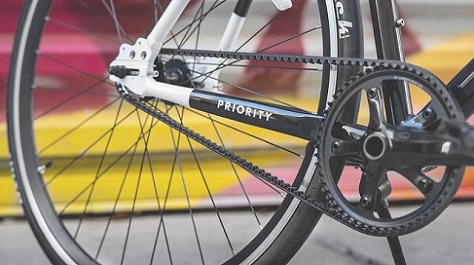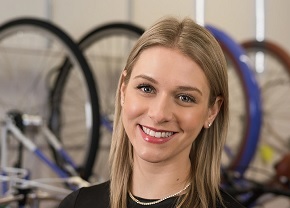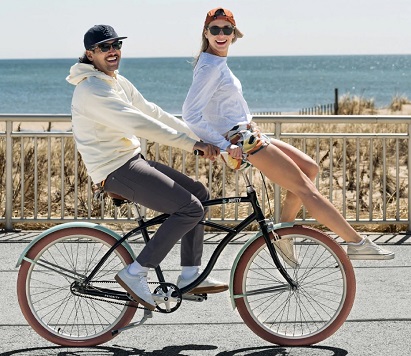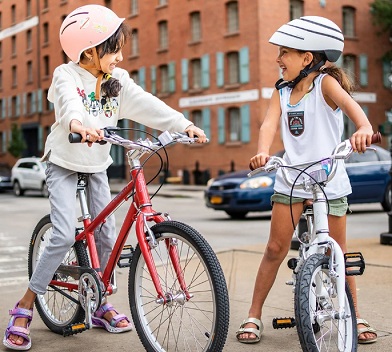 NEW YORK—Finding the right best practices for a bike or e-bike lending program should not be taken lightly. Your choice of bike supplier could mean the difference between happy, satisfied guests and staff and both groups getting stressed due to middle-of-nowhere breakdowns and mechanical messes. If you do get your bike and e-bike program right, it can be a shining, brand-building amenity for your property—and keep guests coming back for more.
NEW YORK—Finding the right best practices for a bike or e-bike lending program should not be taken lightly. Your choice of bike supplier could mean the difference between happy, satisfied guests and staff and both groups getting stressed due to middle-of-nowhere breakdowns and mechanical messes. If you do get your bike and e-bike program right, it can be a shining, brand-building amenity for your property—and keep guests coming back for more.
Green Lodging News recently spoke with Lauren Jones, Director of Partnerships for New York-based Priority Bicycles, to not only learn more about her company but to also get a rundown of the best practices for bike and e-bike lending in a lodging environment.

First, you have to know a bit of history about Priority Bicycles. More than eight years ago it launched on Kickstarter with a goal of raising $30,000 to fund the first shipment of what was to be called “The Priority Classic.” The goal was hit within a few hours and over the course of the 30-day campaign, Priority Bicycles raised $565,000. That campaign was the first of three fully funded Kickstarter campaigns.
“We were seeing a lot of innovation at the high end but not with recreational bicycles,” Jones says. “Our goal was to make biking more accessible.”
No Chain to Grease or That Rusts
Key to the success of Priority Bicycles is its online only business model (no retail stores) and the design of its bicycles. They are high quality, engineered for ease of use and require no regular maintenance. In fact, there is no chain that needs to be greased.
“All have a carbon-drive belt,” Jones says. “It means no grease, no rust. It reduces maintenance by about 75 percent.” That is the first piece of good news for the person responsible for maintaining a fleet of bicycles. If mechanical assistance is needed, Priority Bicycles offers a directory and map of bike shop locations in the U.S. on its website. Its website also offers a video for each bike model to guide one through bike assembly. Additional maintenance information is also available on the site.
 The company’s low-maintenance bicycle design has appealed to hoteliers. “When we launched, we started getting requests from GMs,” Jones says. “A lot of hotels want bike programs but don’t want to manage it.”
The company’s low-maintenance bicycle design has appealed to hoteliers. “When we launched, we started getting requests from GMs,” Jones says. “A lot of hotels want bike programs but don’t want to manage it.”
Priority Bicycles now has more than 450 hospitality partners all over the world. “We are able to tailor our bicycles to a specific partner—from a B&B to a resort in the Maldives,” she says.
Priority Bicycles, like other companies, offer different models for different uses. “We have over 15 models—everything from kids bikes to e-bikes and beach bikes. We offer bikes in the consumer and adventure segment.”
Jones says two popular models for hotels include the single-speed Priority Coast for the beach and the Priority Classic Plus for around town. It is more of a hybrid bicycle and has three speeds.
Priority Bicycles currently offers one e-bike—the Priority Current E-bike—but Jones says her company will launch an electric version of its Coast bicycle in the next month. “We are seeing the trend of hotels asking for e-bikes,” she says. “They allow guests to go places they otherwise would not have been able to go.”
Priority Bicycles does most of its manufacturing in China, but it operates all fulfillment from their warehouse in Pennsylvania that also oversees small-batch customization and custom paint.
Bicycle Program Advice
As mentioned, Jones was asked about bike lending program best practices. First, she says, “Understand the style of riding your guests will be doing.” A hotel in hilly San Francisco will need a different type of bicycle than a hotel in Dallas.
“When you approach a bicycle program, make it a branded experience,” says Jones, who has a background in fashion and design. A custom painted bicycle, with the brand’s colors and logo, positioned in the lobby can help publicize and increase use of a bicycle lending program. Bicycle lending can also be packaged with other amenities—as a getaway picnic for example. “Most hotels offer them as part of a guest amenity package. It is usually run by the concierge,” Jones says.
“Number the bicycles so it is easy to keep track,” she adds. “We number the bicycles behind the seat.”
 “We have a recommended safety checklist,” she says. “We give staff the basic training. When we set up a hotel with bicycles, we will set up an online call and go through best practices.” You should also partner with a local mechanic and have them come through and safety check each bicycle on a regular basis. “Put air in the tires. Get everything tightened,” Jones says.
“We have a recommended safety checklist,” she says. “We give staff the basic training. When we set up a hotel with bicycles, we will set up an online call and go through best practices.” You should also partner with a local mechanic and have them come through and safety check each bicycle on a regular basis. “Put air in the tires. Get everything tightened,” Jones says.
With an electric bicycle, charging is the biggest difference. “We suggest buying spare batteries,” Jones says. “It is a helpful thing. It takes an hour to get a full charge. How long a charge lasts depends on the way the bike is ridden.” In eco-mode, 30 miles can be expected. In turbo mode the miles will be less.
In regard to how many bicycles to purchase, it depends of course on property size, but Jones suggests six to 10 bicycles at first. (A property in the Maldives has a 450-bicycle fleet.)
“We always recommend some type of waiver,” Jones says.
When making a bicycle purchase, ask about warranty as well. “Our warranty is five years on forks and frame and one year on parts,” Jones says. “Warranties typically do not cover the wear and tear that a bicycle will have from high usage, however, we have a customer service team available 365 days a year to help guide partners through mechanical fixes and sourcing replacement parts.”
Glenn Hasek can be reached at greenlodgingnews@gmail.com.






